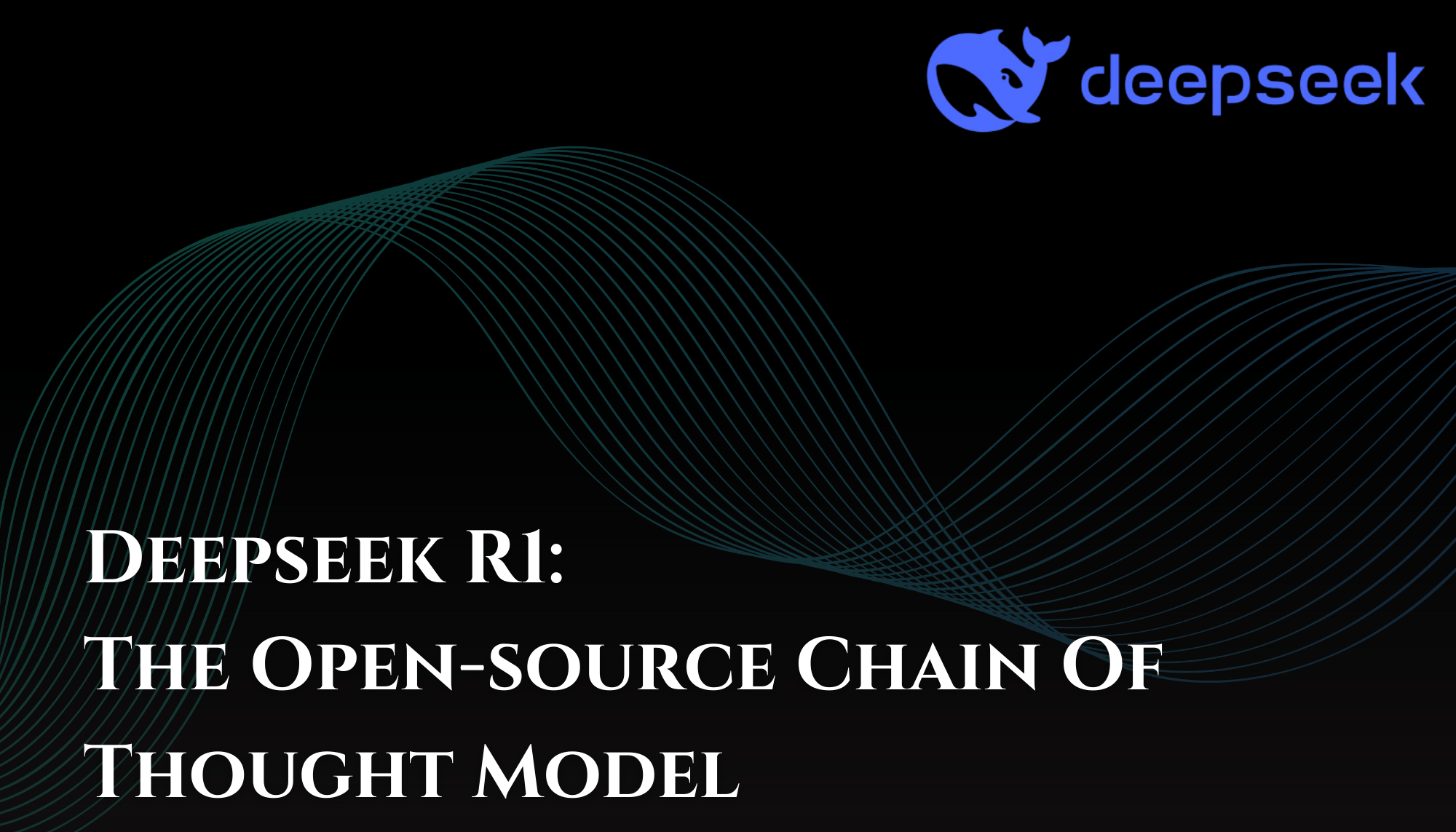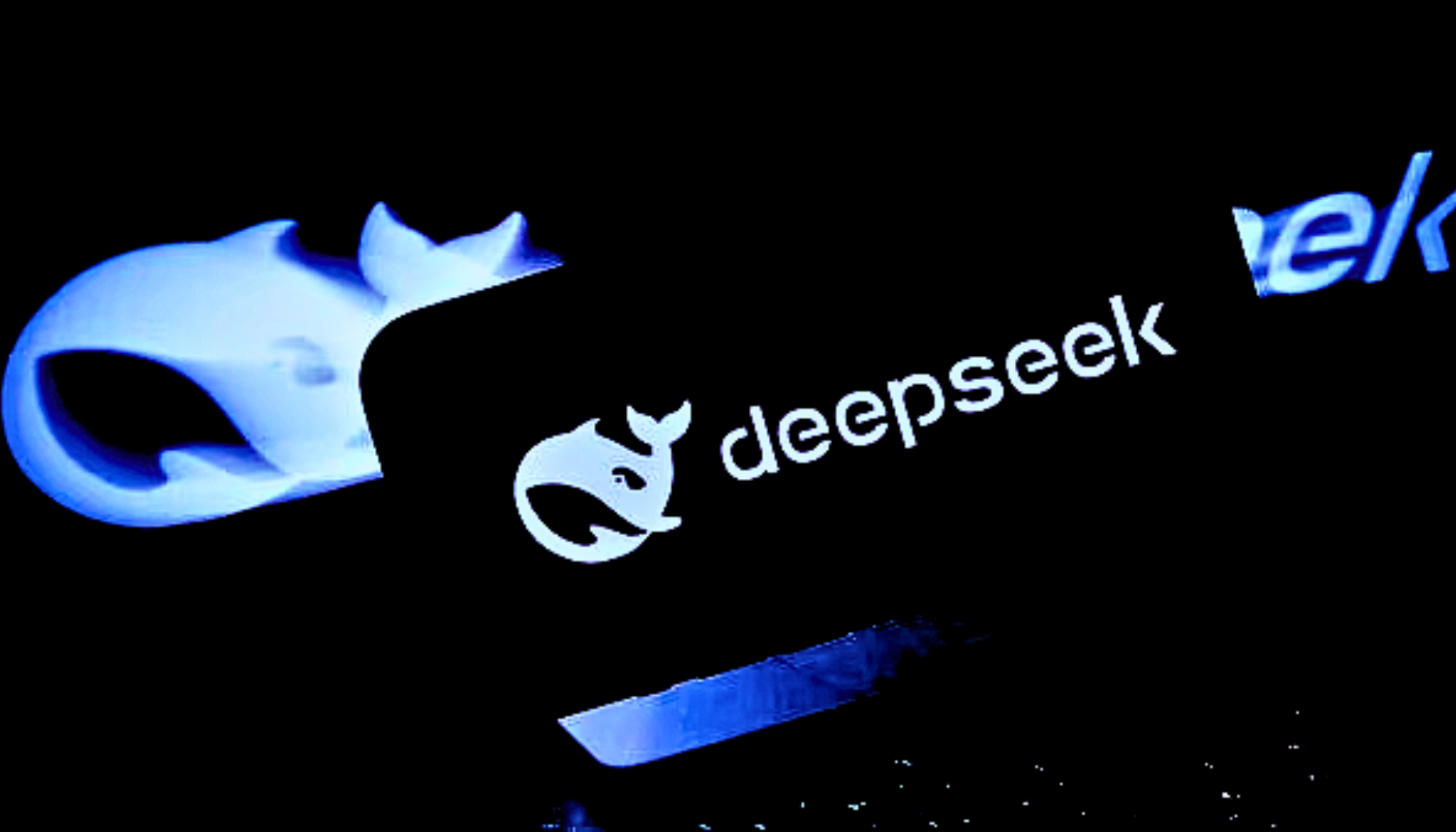Deepseek R1: The Open-source Chain of Thought Model
Smash Code
Jan 30, 2025

Have you ever considered how AI can solve complex problems and explain its reasoning? That's where chain of thought models like DeepSeek R1 come in. In this blog, I'll break down its key features, and the fascinating concept of chain of thought and explore how DeepSeek R1 leverages this approach to achieve remarkable results.
Also, I‘ll discuss the implications of open-sourcing such powerful AI models and how they can shape the future of AI research and development.
DeepSeek R1 Key Features
DeepSeek R1 incorporates several key features that enhance its performance and usability. One of its most significant strengths is its open-source nature. This allows you to freely modify, distribute, and implement the model according to your specific needs.
This open-source philosophy fosters a collaborative community where developers can share their insights, contribute improvements, and collectively drive innovation.
Furthermore, DeepSeek R1 excels in chain-of-thought reasoning. This capability enables the model to tackle complex tasks by breaking them down into a series of smaller, more manageable steps.
This approach significantly improves its ability to handle challenging queries and produce more accurate and insightful results.
DeepSeek R1 is also designed with competitive pricing in mind. It aims to offer comparable or even superior performance to commercial models from companies like OpenAI but at a more accessible price point.
This makes it a more cost-effective option for developers and businesses looking to leverage the power of advanced AI.
Scalability is another key feature of DeepSeek R1. It is designed to be deployed across a wide range of applications and environments, from small-scale devices to large-scale server setups. This flexibility allows users to adapt the model to their specific needs and resources.
To facilitate easy integration, DeepSeek R1 provides a user-friendly API. This API simplifies the process of incorporating the model into various applications and systems, making it more accessible for developers with different levels of expertise.
DeepSeek R1 has been trained on a diverse range of datasets. This extensive training helps to improve the model's accuracy and reduce biases in its responses, leading to more reliable and trustworthy outputs.
Also, DeepSeek R1 thrives on community involvement. As an open-source project, it encourages contributions from a wide range of users. This community-driven approach allows for continuous refinement and improvement of the model, ensuring it remains at the forefront of AI technology.
These features make DeepSeek R1 a compelling option for developers and researchers seeking to leverage advanced AI capabilities without the high costs associated with proprietary models.
DeepSeek VS OpenAI
DeepSeek R1 and OpenAI models present distinct approaches to large language models.
Here is a comparison between DeepSeek RI and Open AI
1. Accessibility
DeepSeek R1, being open-source, offers users greater flexibility. It allows for customization and modification to suit specific needs and applications, making it more adaptable for diverse use cases. In contrast, OpenAI models are typically closed-source with licensing agreements, which can limit customization options.
2. Cost
DeepSeek R1 aims for competitive pricing, making it a more affordable option for people and smaller organizations. OpenAI models, on the other hand, often involve subscription fees or usage-based pricing, which can accumulate costs, particularly for high-volume use.
3. Reasoning Capabilities
Both models exhibit complex reasoning capabilities. DeepSeek R1 emphasizes chain-of-thought reasoning, enabling it to tackle intricate queries by structuring responses more logically.
OpenAI models also possess strong reasoning abilities, although their effectiveness can vary depending on the specific model and the context of the query.
4. Community and Collaboration
DeepSeek R1 thrives on community contributions. This collaborative environment fosters rapid improvements and introduces diverse perspectives into the model's development.
In contrast, improvements to OpenAI models are primarily driven by internal development teams, with limited community-driven input.
5. Training Data and Adaptability
DeepSeek R1 is trained on diverse datasets to minimize biases. Its open-source nature allows users to retrain or fine-tune the model based on their specific requirements.
OpenAI models utilize curated datasets, but the ability to modify these datasets may be restricted.
6. Deployment
The open-source nature of DeepSeek R1 provides more flexible deployment options. OpenAI models often require cloud-based deployment through APIs, which can potentially introduce latency issues depending on the application's requirements.
Chain-of-Thought Reasoning
Chain-of-thought reasoning is a powerful technique employed in AI models, where the model approaches problem-solving and decision-making by breaking down complex queries into a series of smaller, more manageable steps. This approach mimics human thought processes, proving particularly valuable for tasks that require multi-step reasoning and logical deduction.
Here are key Aspects of Chain-of-Thought Reasoning
- Step-by-Step Breakdown: Instead of immediately jumping to a final answer, the model generates intermediate reasoning steps. This systematic approach not only clarifies the model's thought process but also increases the likelihood of arriving at accurate conclusions.
- Improved Accuracy: By meticulously outlining each logical step, the model can effectively verify the validity of its reasoning at each stage. This rigorous self-checking significantly enhances accuracy, especially when dealing with complex tasks.
- Transparency: Chain-of-thought reasoning provides valuable insights into the model's decision-making process. Users can readily observe the reasoning sequence, fostering trust and improving the interpretability of the model's outputs.
- Diverse Applications: This reasoning technique finds applications across various domains, including mathematical problem-solving, logical reasoning, and natural language understanding tasks where nuanced interpretations and contextual awareness are crucial.
- Training and Development: AI models can be specifically trained to incorporate chain-of-thought reasoning. This involves training them on examples that demonstrate multi-step reasoning, enabling the models to learn from structured prompts and queries.
Consider a simple scenario: "What is the total cost if I buy 3 apples at $2 each and 2 oranges at $1.50 each?" A model employing chain-of-thought reasoning would approach this as follows:
- Calculate the cost of the apples: 3 apples, $2/apple = $6
- Calculate the cost of the oranges: 2 oranges, $1.50/orange = $3
- Calculate the total cost: $6 for apples + $3 for oranges = $9
This structured approach demonstrates how chain-of-thought reasoning enhances the model's clarity and effectiveness, particularly when tackling more complex and intricate problems.
DeepSeek RI Performance

DeepSeek-R1 excelled in several performance benchmarks
If we talk about math reasoning, it scored 97.3% on the MATH 500 benchmark, setting a record.
In coding skills, it got the 96.3rd percentile on the Codeforces benchmark, closely following OpenAI’s 96.4th percentile.
When in AIME 2024, it slightly surpassed OpenAI’s O1–1217 model with a pass@1 score of 79.8%, compared to 79.2%.
When it comes to general Knowledge, it scored lower than O1–1217 on MMLU (90.8% vs. 91.8%) and GPQA Diamond (71.5% vs. 75.7%), highlighting strengths in reasoning over knowledge retrieval.
In software Engineering, it achieved 49.2% on the SWE-bench Verified benchmark, indicating strong software verification performance.
Moreover, DeepSeek-R1 is highly cost-effective, with training costs 95% lower than competitors and an API priced at just $0.55 per million tokens—only 2% of OpenAI O1's cost. This disruptive pricing makes reasoning models accessible to most businesses.
Additionally, DeepSeek-R1 offers distilled models with comparable reasoning capabilities that run on smaller hardware, akin to an O1-mini on your computer. They provide a range of distilled models from 1.5B to 70B parameters that can deliver GPT-4 level performance on customer GPUs.
The technical architecture of DeepSeek-R1 is impressive, utilizing a Mixture-of-Experts (MoE) setup with a total of 671 billion parameters, of which only 37 billion are activated per task. This design allows for efficient operation without sacrificing performance, as it leverages specialized parameters for specific tasks.
DeepSeek-RI Key Components
DeepSeek-R1's training approach is innovative. Unlike most LLMs that primarily use Supervised Fine-Tuning (SFT), it emphasizes Reinforcement Learning (RL) with minimal SFT. Key components include:
- DeepSeek-R1-Zero: The model is trained solely with RL, enabling it to autonomously learn complex reasoning skills like self-verification and Chain-of-Thought (CoT) reasoning.
- DeepSeek-R1: Enhanced from R1-Zero using a curated “cold start” dataset and multi-stage RL to improve readability and address language mixing issues.
- GRPO: A new algorithm that allows the model to generate multiple responses, evaluate them for accuracy and format, and reinforce the best results.
Both DeepSeek R1 and OpenAI models present a variety of unique strengths and advantages that cater to different user preferences and requirements. For users who place a high value on customization options and seek a balance between performance and affordability, DeepSeek R1 may be particularly appealing. It allows for adjustments that can fit specific needs and budgets, making it an attractive choice for individuals and organizations alike. On the other hand, OpenAI models might attract those who are looking for a solution that offers robust, reliable support along with impressive out-of-the-box functionality. This distinction points to the idea that the best choice for any user will ultimately depend on their particular needs, preferences, and the resources available to them or their organization.
DeepSeek R1 represents a noteworthy advancement in the realm of open-source artificial intelligence. It showcases significant improvements in reasoning efficiency, enhanced problem-solving capabilities, and overall cost-effectiveness. Moreover, it serves as a more accessible and viable alternative to the proprietary models developed by major technology companies. With its remarkable performance characteristics, DeepSeek R1 challenges the traditional paradigm characterized by resource-intensive development processes of closed models. This shift emphasizes the potential for innovation outside the conventional boundaries set by larger corporations.
As the field of artificial intelligence continues to advance at an astonishing pace, DeepSeek R1 stands as a prime example of how open-source initiatives and collaborative efforts can accelerate progress and fuel creativity in the domain. It illustrates a critical point: that innovative ideas and solutions can emerge and thrive even in situations where resources are limited. This capability underscores the rapid convergence occurring between open-source and closed-source AI, suggesting that the future of artificial intelligence may be defined by a blending of these approaches rather than a strict separation. In this evolving landscape, the potential for both models to coexist and complement one another is increasingly becoming apparent.